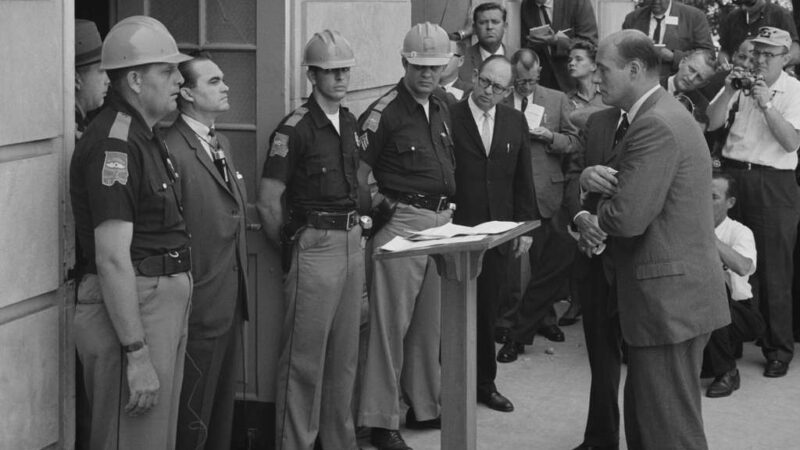The Etan Patz case changed how America responds to missing kids
On May 25, 1979, 6-year-old Etan Patz left his family SoHo apartment in Manhattan to walk the short distance to his school bus stop, all by himself for the very first time.
But somewhere between the two blocks from home to where Patz was meant to board the bus, something happened. And Patz was never seen or heard from again.
The case of the missing boy with blonde bangs and curious eyes stunned the nation and led to a generation of anxious parents and changes in how law enforcement responds to missing children.
It once again captured public attention this week, when an appeals court ordered a new trial for Pedro Hernandez, who was convicted in 2017 of kidnapping and murdering the child. Judges ordered his conviction overturned on the basis of “clearly wrong” instructions issued to jurors in 2017.
He now faces a retrial 46 years after Patz was last seen alive.
Law enforcement’s response to missing children has changed
When Patz never made it to school and back home, his family called the police and a decades-long hunt for answers began.
Neighbors and law enforcement worked side-by-side in the immediate days following the boy’s disappearance. And his father, a photographer, distributed professional-grade pictures of Patz for missing child posters. But as NPR reported in 2012, police in New York City had a limited ability to communicate with other law enforcement agencies about the case.
While the mechanisms in place today to help quickly identify and rescue missing children are now commonplace — including national and international registries for missing young people and emergency abduction alerts — at the time of Patz’s disappearance, the landscape for missing and abducted kids was far less coordinated.
“Most law enforcement now understands that a missing kid is important and it needs to be dealt with immediately — that if bad things are going to happen, they happen pretty fast,” says Kevin Branzetti, co-founder and CEO of the National Child Protection Task Force (NCPTF), a nonprofit that partners with law enforcement to help locate missing children.
Prior to founding the NCPTF, Branzetti spent nearly three decades working in law enforcement. He wasn’t yet on the force when Patz went missing — he was similarly an adolescent boy who spent his free time roaming New York City with limited supervision.
At the time of the Patz disappearance, most police departments around the country had mandatory waiting periods of 24, 48 or 72 hours before someone could be reported missing.
The modern urgency in missing children cases, Branzetti says, can be traced back to the Patz disappearance.
“Every hour and every day … the odds of really bad things happening goes up exponentially,” Branzetti says.
The publicity of the Patz case also helped initiate better communication between law enforcement agencies to have a wider, more comprehensive search effort when children are reported missing.
“If it happened today, I can’t tell you if they would have found [Patz] alive, but they would have found him, and somebody would have been in jail day one,” Branzetti says.
Change to these systems was slow but steady in the years after Patz’s disappearance. His father’s trove of pictures of the little boy helped keep the story in the national focus.
A societal shift

The growing campaign around finding Patz led to heightened publicity on other missing children’s cases, and helped launch the famous missing children milk carton notices of the ’80s and ’90s.
Along with another high-profile case, the abduction and murder of 6-year-old Adam Walsh in 1981, it helped to spur the 1984 creation of the National Center for Missing and Exploited Children (NCMEC). The organization, co-founded by Walsh’s parents, works with law enforcement to locate missing children and offers support to parents.
“When 6-year-old Etan Patz vanished in 1979, it marked a heartbreaking turning point for our nation,” the NCMEC said in a statement. “His disappearance sparked a movement that changed how we protect and search for missing children.”
On the fourth anniversary of his disappearance, President Ronald Reagan established National Missing Children’s Day.
Patz’s disappearance also had a profound impact on how children were allowed to play and taught to socialize.
Prior to seeing posters of the little blonde boy with the label “missing” striking fear and caution into parents’ hearts, there hadn’t been a concept of “stranger danger,” and people who grew up in that era recall roaming freely outdoors with little to no adult supervision.
“It became a movement that really changed our culture, changed the way we raise our kids, changed the laws,” says Lisa Cohen, author of the book After Etan: The Missing Child Case that Held America Captive.
“There was a lot of great awareness that came out of it. And there was also this idea that we became a very fearful people who were afraid to let our kids do anything on their own, and that is arguably not a good thing.”
Cohen, who would go on to cover the missing child case more than a decade after Patz’s disappearance, recalled changes in her own childhood at the time out of parents’ newfound fears of predators lying in wait.
“There became this sort of atmosphere of ‘you can’t hug a kid, you can’t touch a kid,'” she says.
Cohen notes that despite these fears of abductions by strangers, a staggering majority of child kidnappings are perpetrated by someone known to the victim or their parents. Abductions by nonfamily make up just 1% of missing children cases reported to the NCMEC.
“But it all sort of stemmed from this initial idea that there are lots and lots of people out there who are strangers to our children who are going to harm them,” Cohen says.
How George Wallace and Bull Connor set the stage for Alabama’s sky-high electric rates
After his notorious stand in the schoolhouse door, Wallace needed a new target. He found it in Alabama Power.
FIFA president defends World Cup ticket prices, saying demand is hitting records
The FIFA President addressed outrage over ticket prices for the World Cup by pointing to record demand and reiterating that most of the proceeds will help support soccer around the world.
From chess to a medical mystery: Great global reads from 2025 you may have missed
We published hundreds of stories on global health and development each year. Some are ... alas ... a bit underappreciated by readers. We've asked our staff for their favorite overlooked posts of 2025.
The U.S. offers Ukraine a 15-year security guarantee for now, Zelenskyy says
Ukrainian President Volodymyr Zelenskyy said Monday the United States is offering his country security guarantees for a period of 15 years as part of a proposed peace plan.
Genre fiction and female authors top U.S. libraries’ most-borrowed lists in 2025
All of the top 10 books borrowed through the public library app Libby were written by women. And Kristin Hannah's The Women was the top checkout in many library systems around the country.
The Best Tiny Desk Concerts of 2025
Which Tiny Desk made an audio engineer question everything? Which one made a producer want to cry? Touch grass? Look back on the year in Tiny Desk, with the people who make them.








